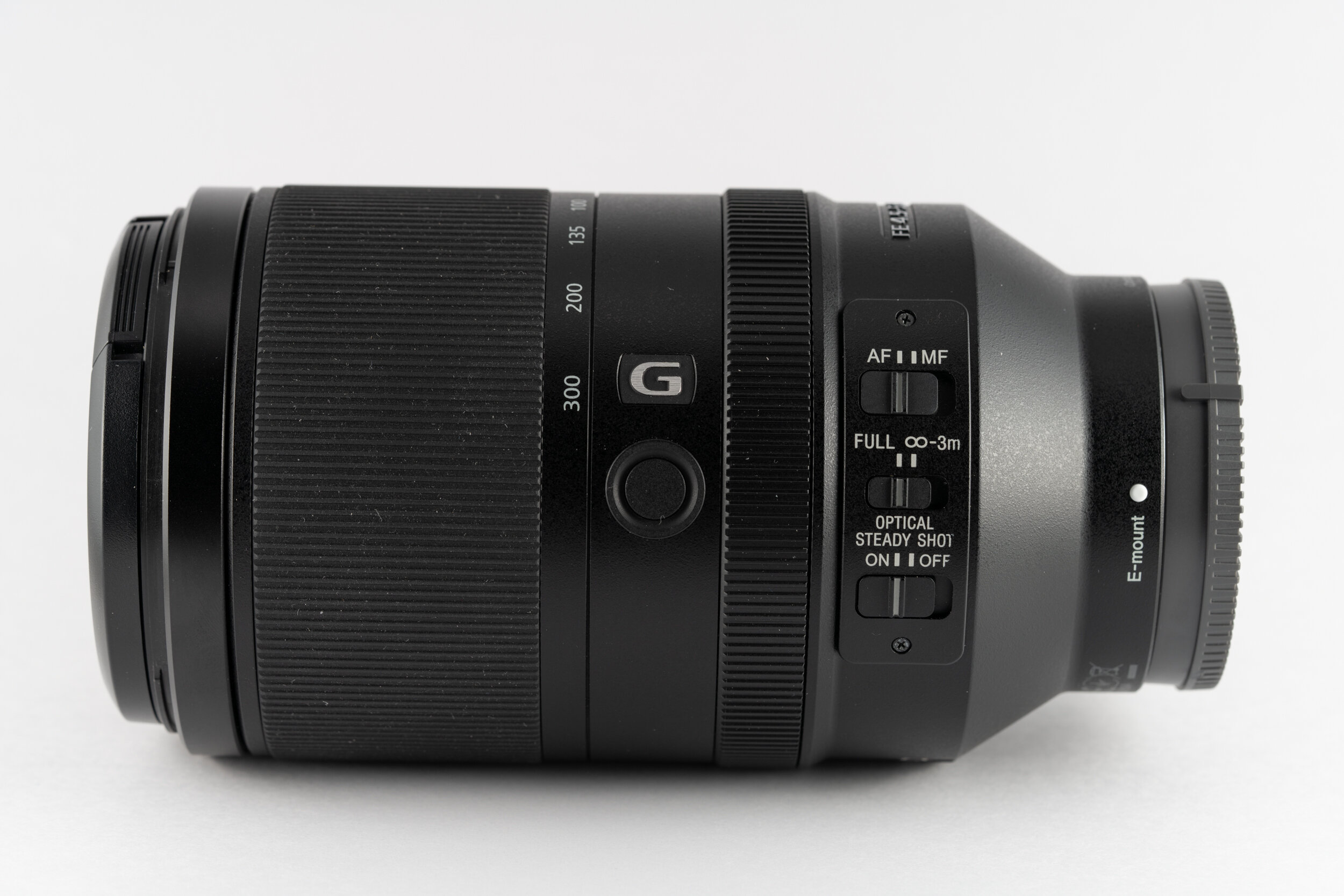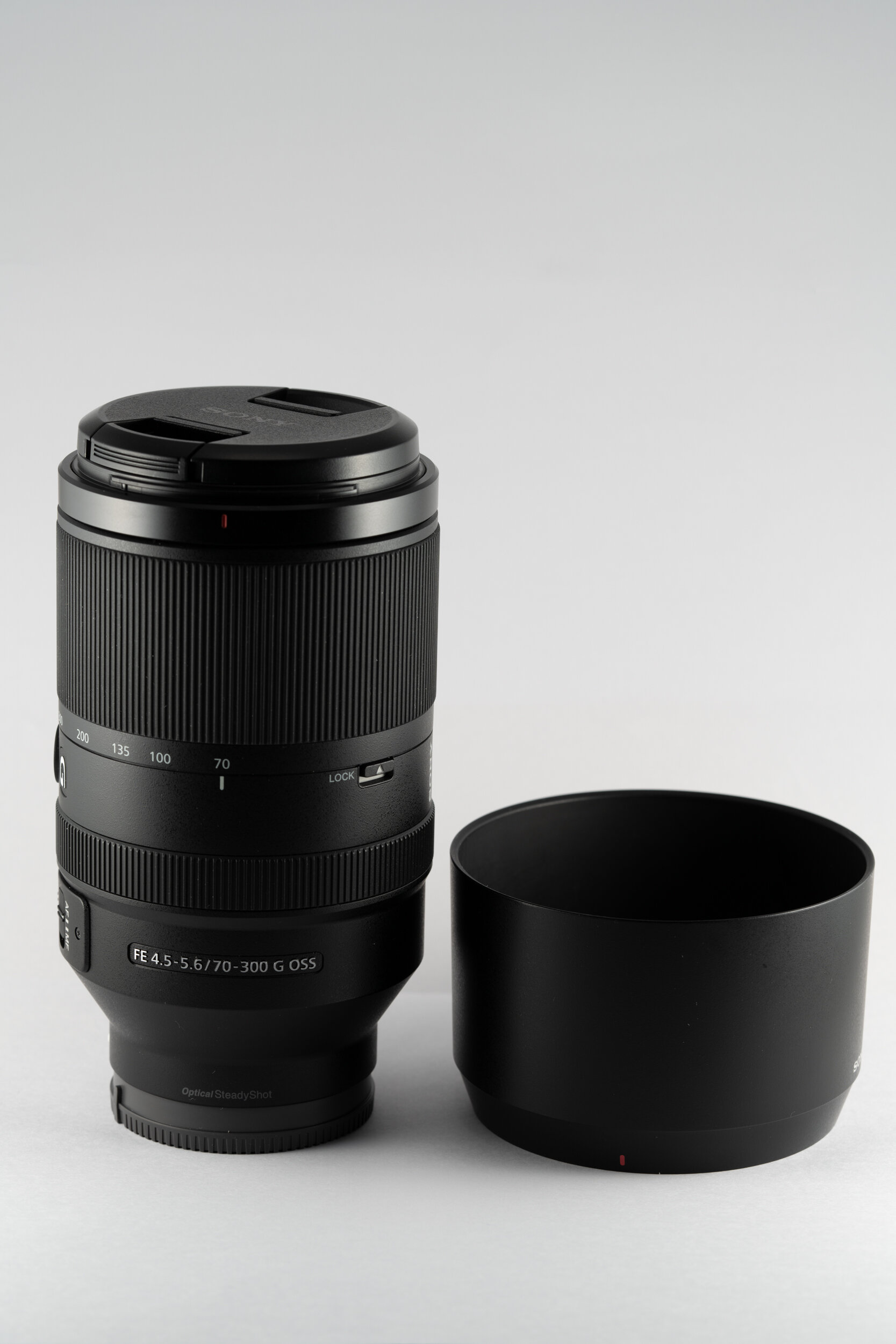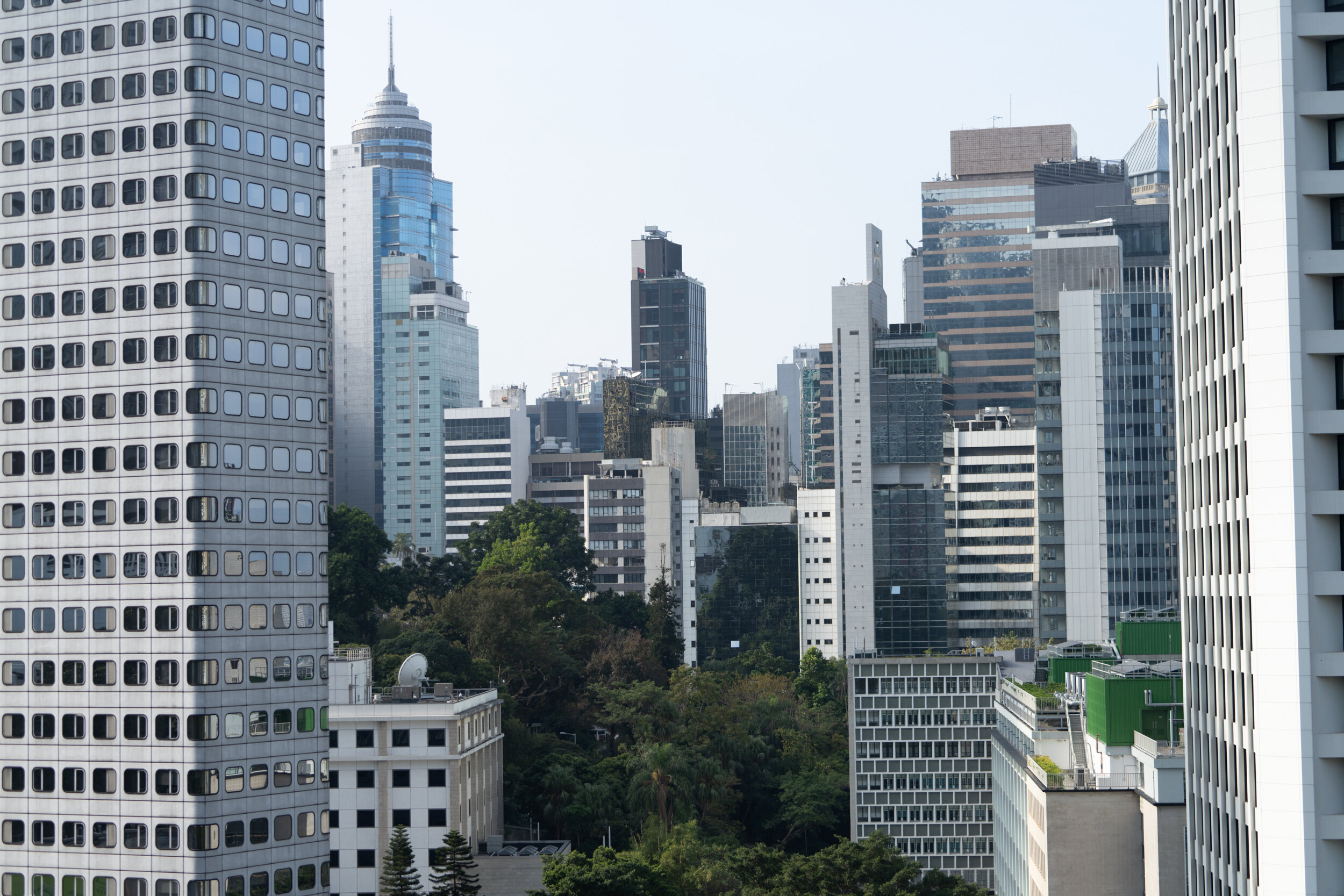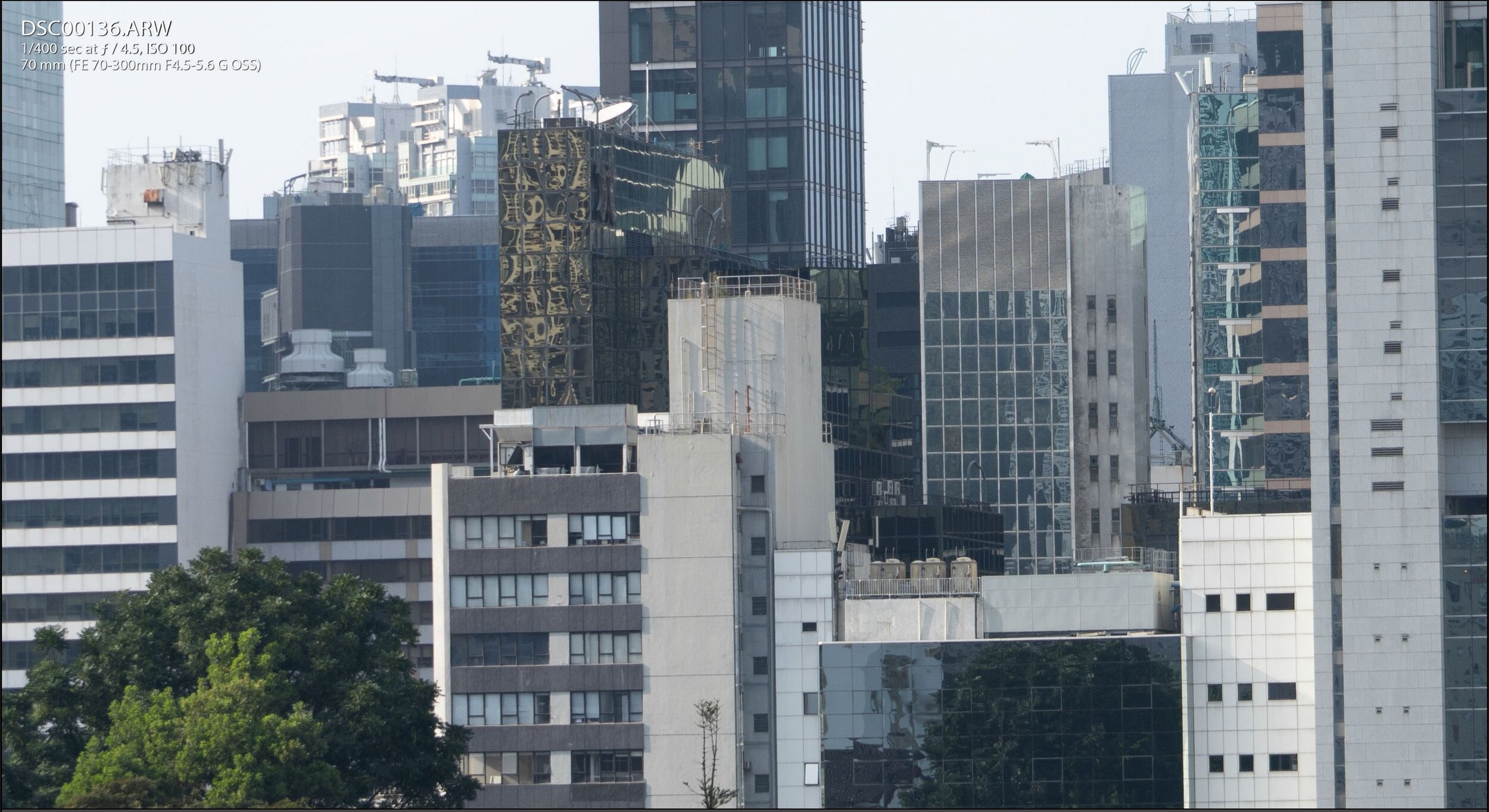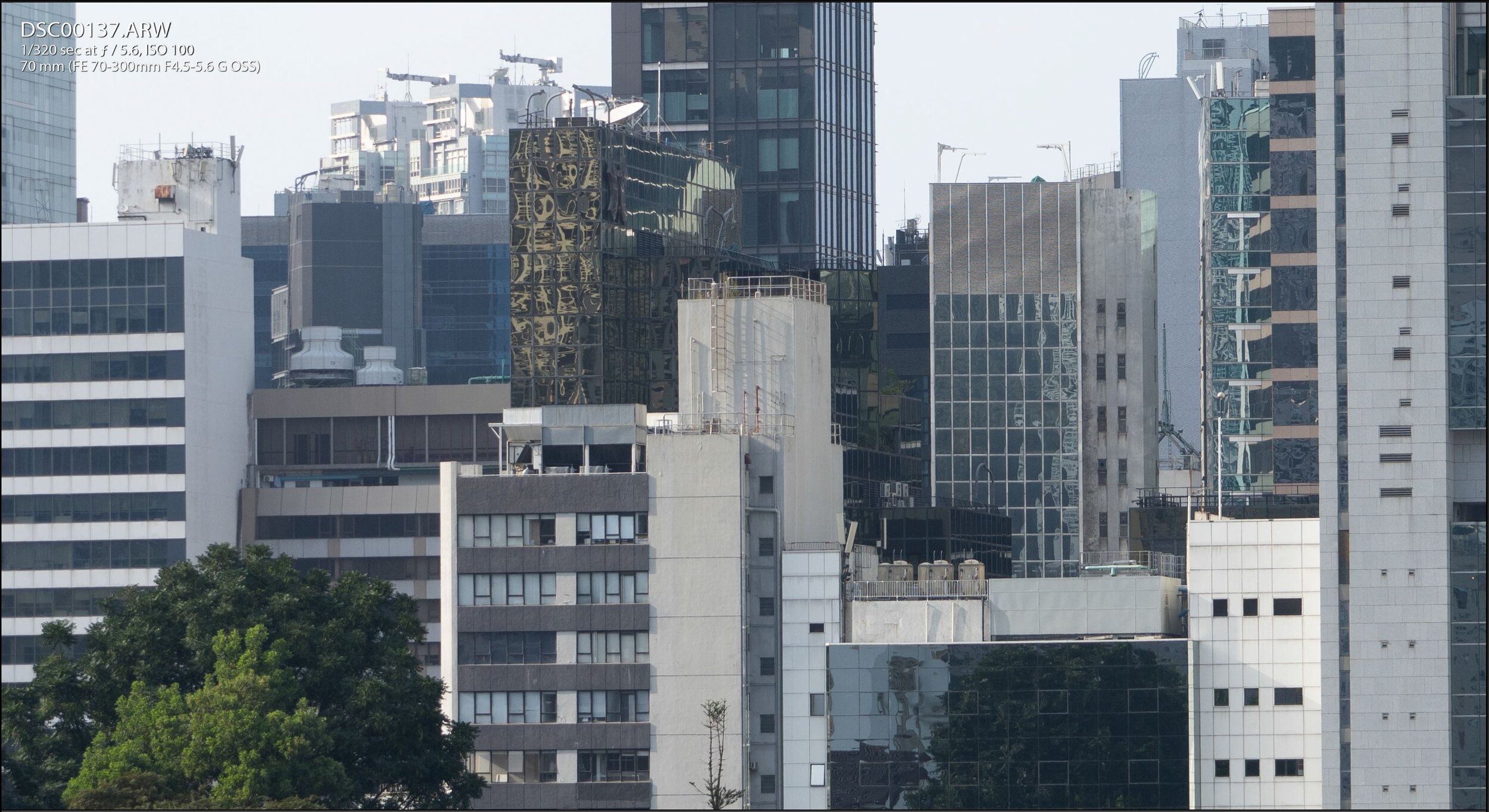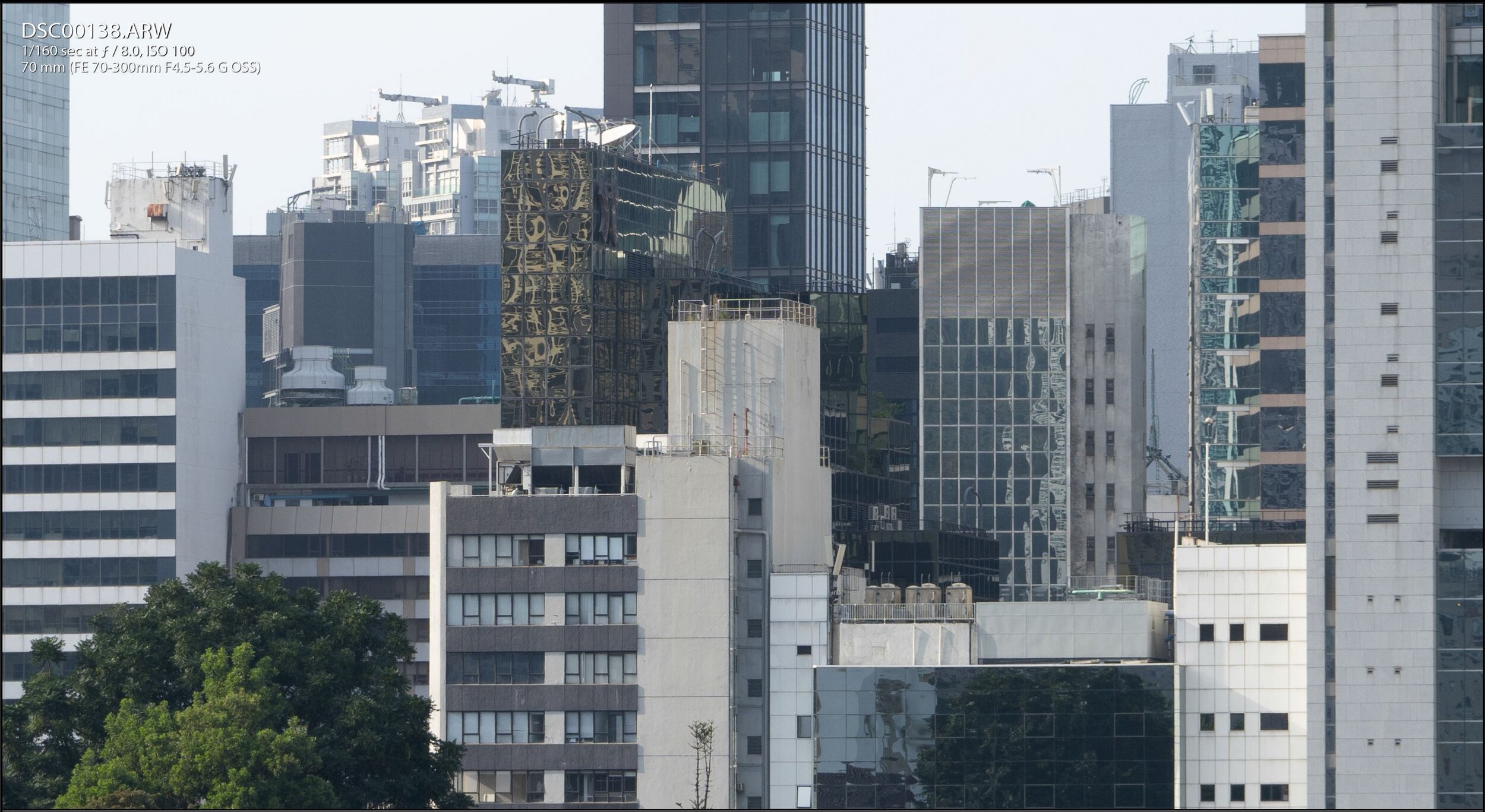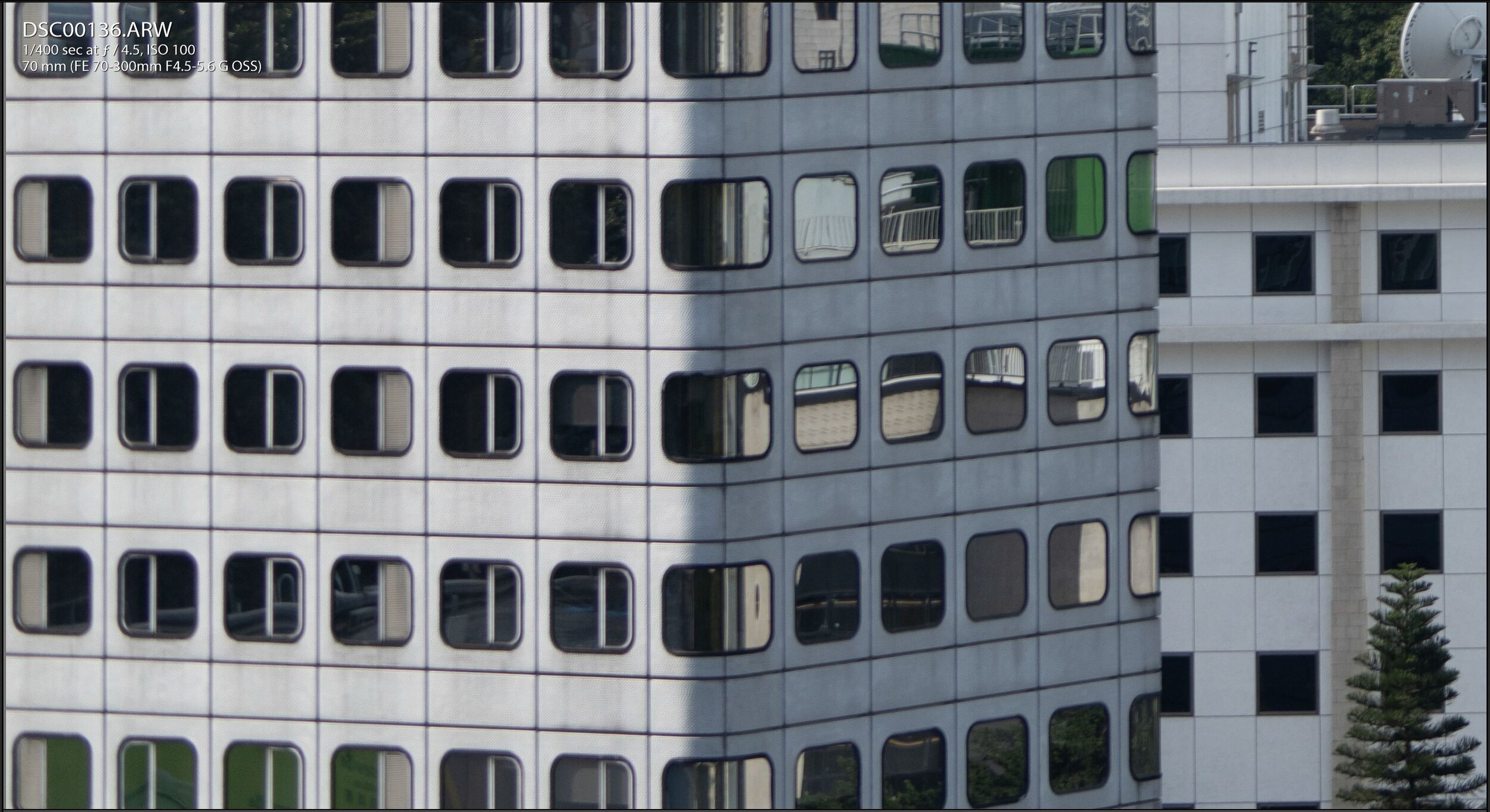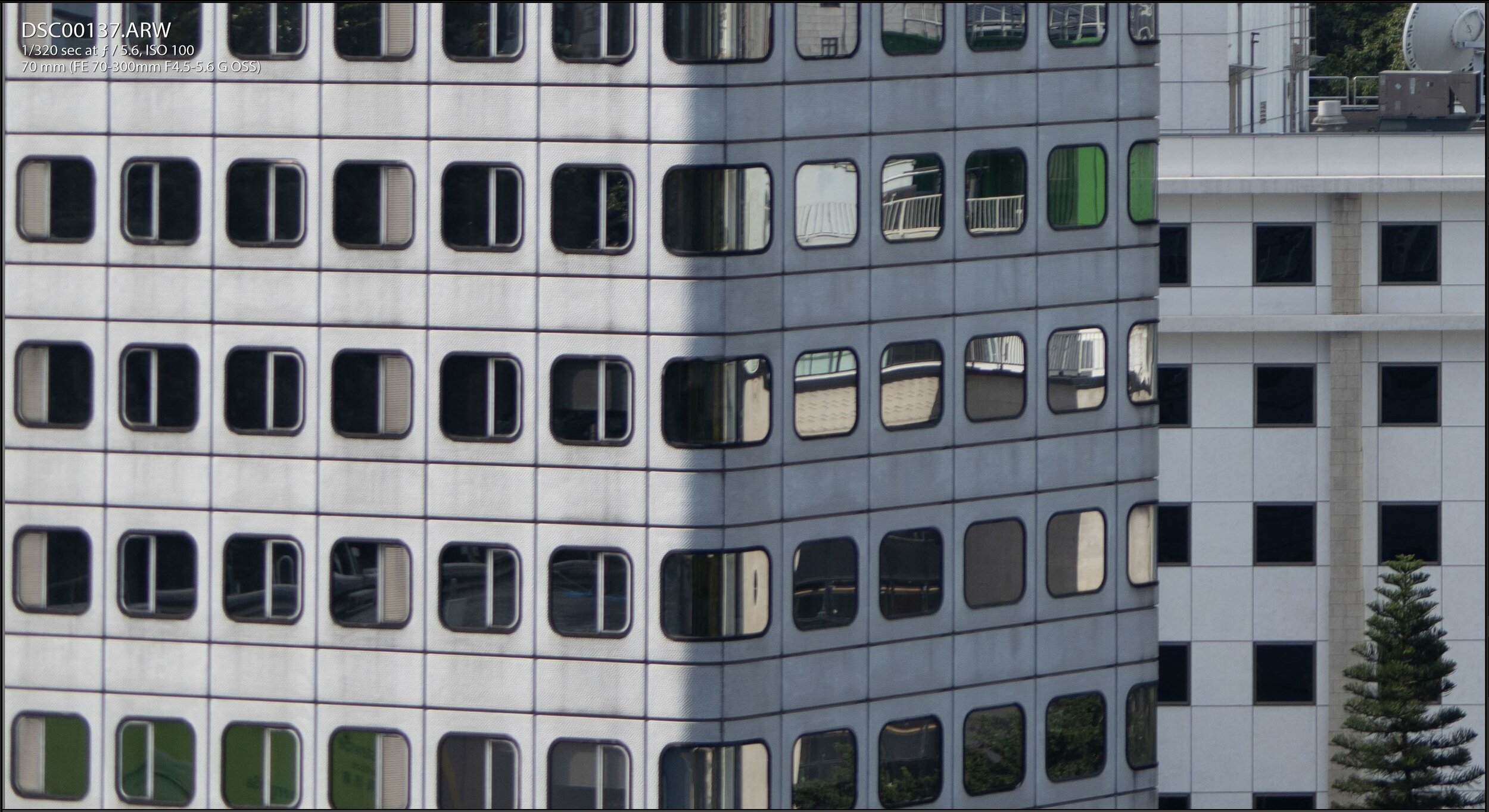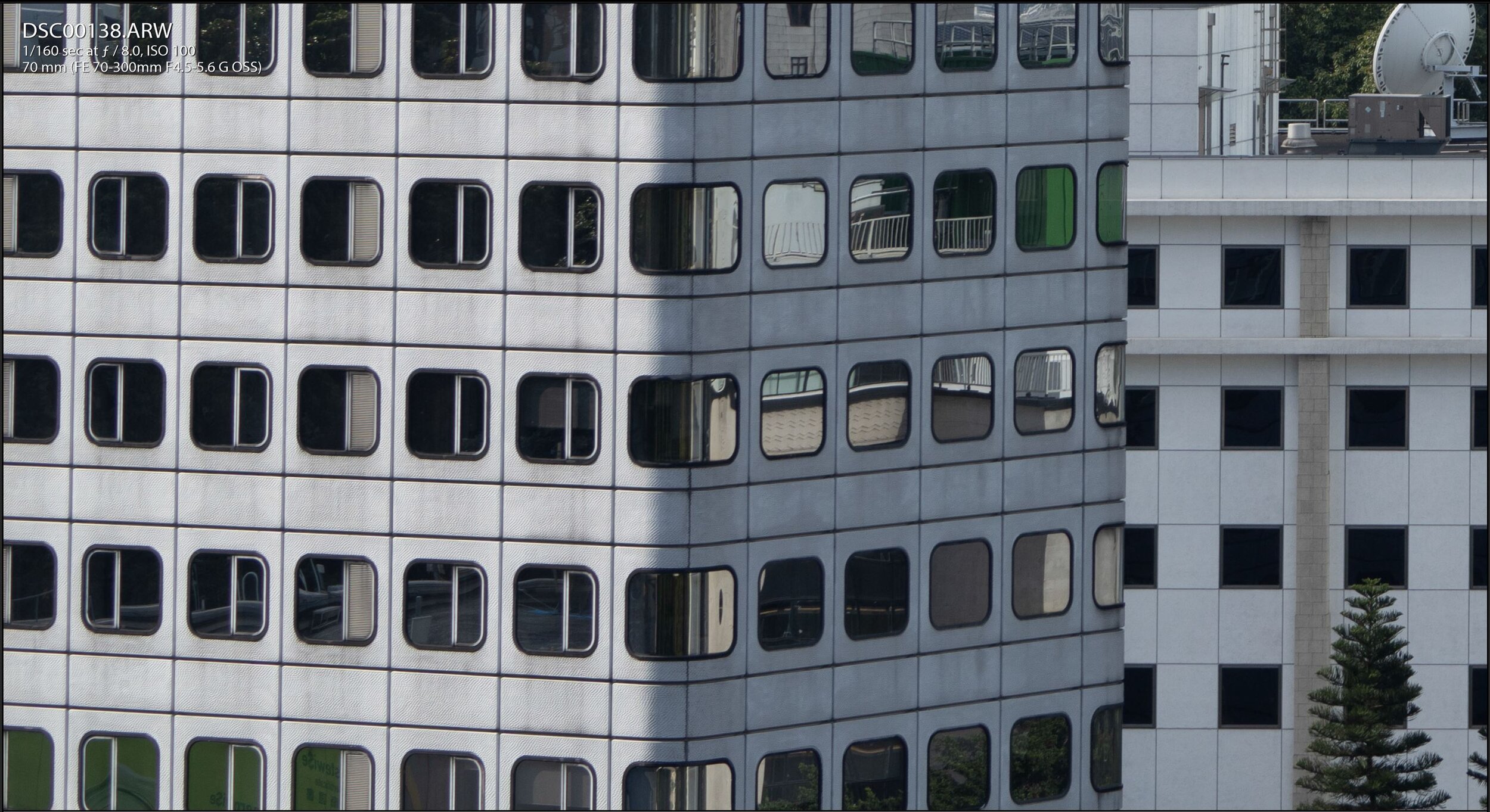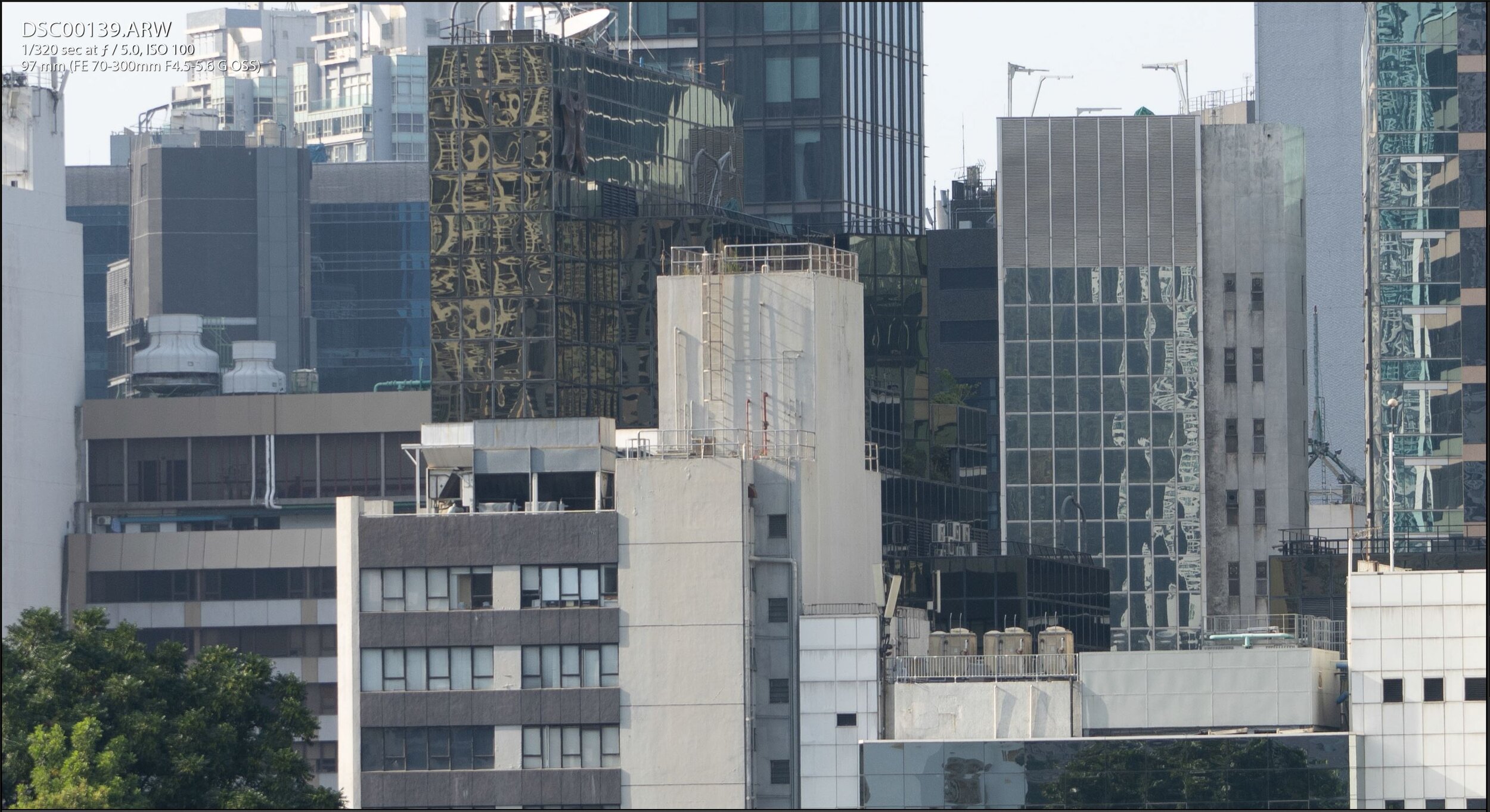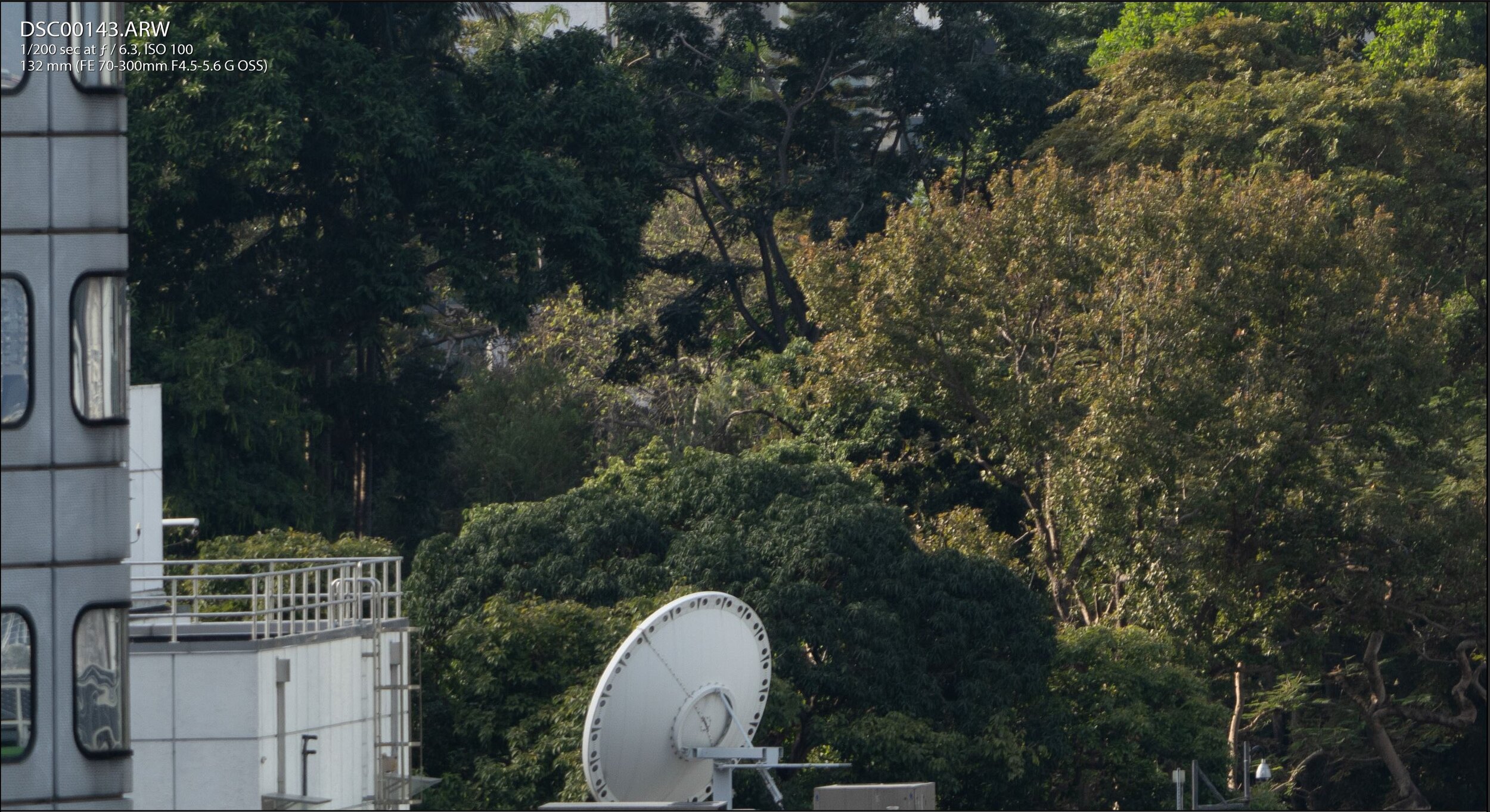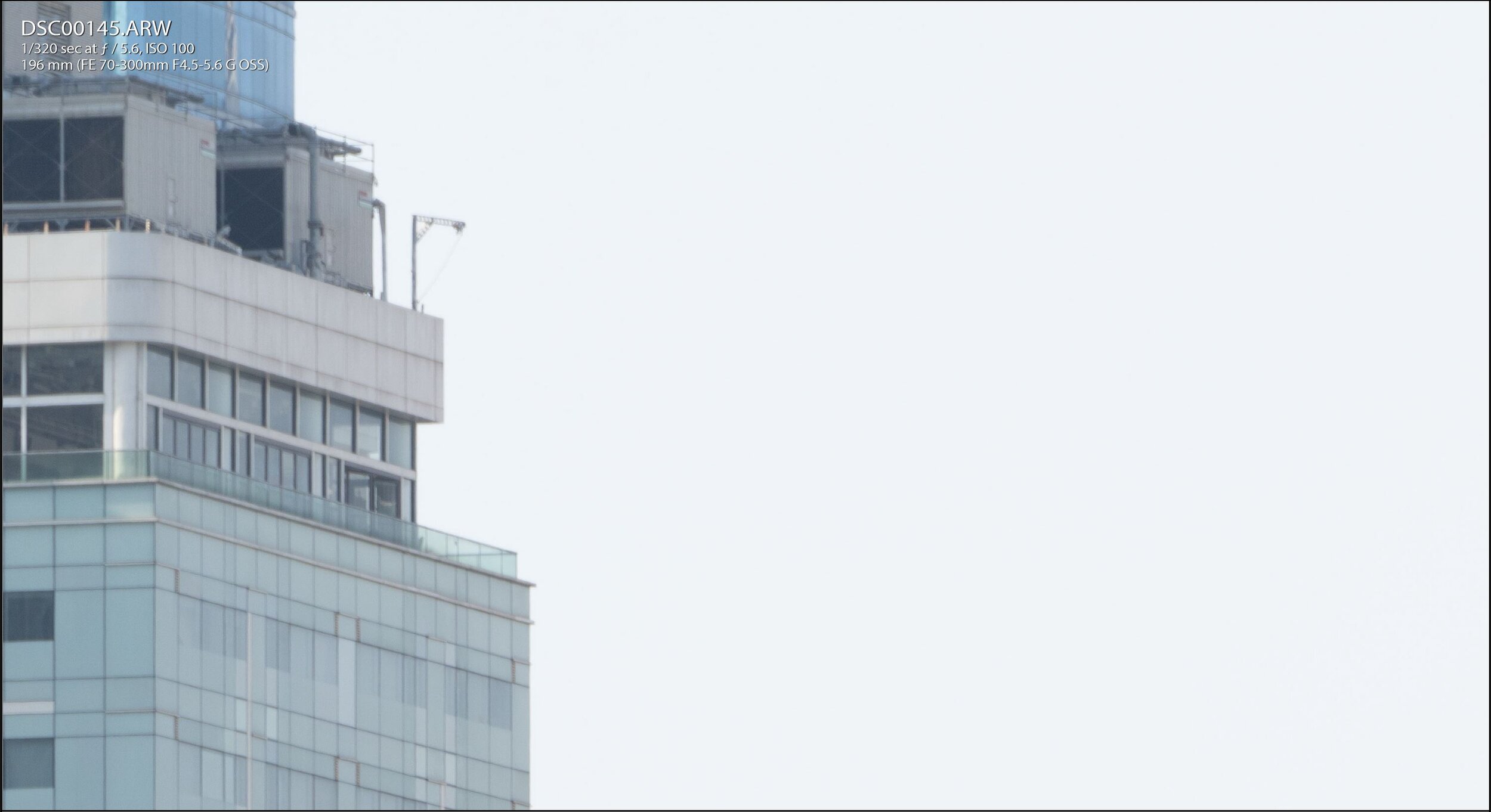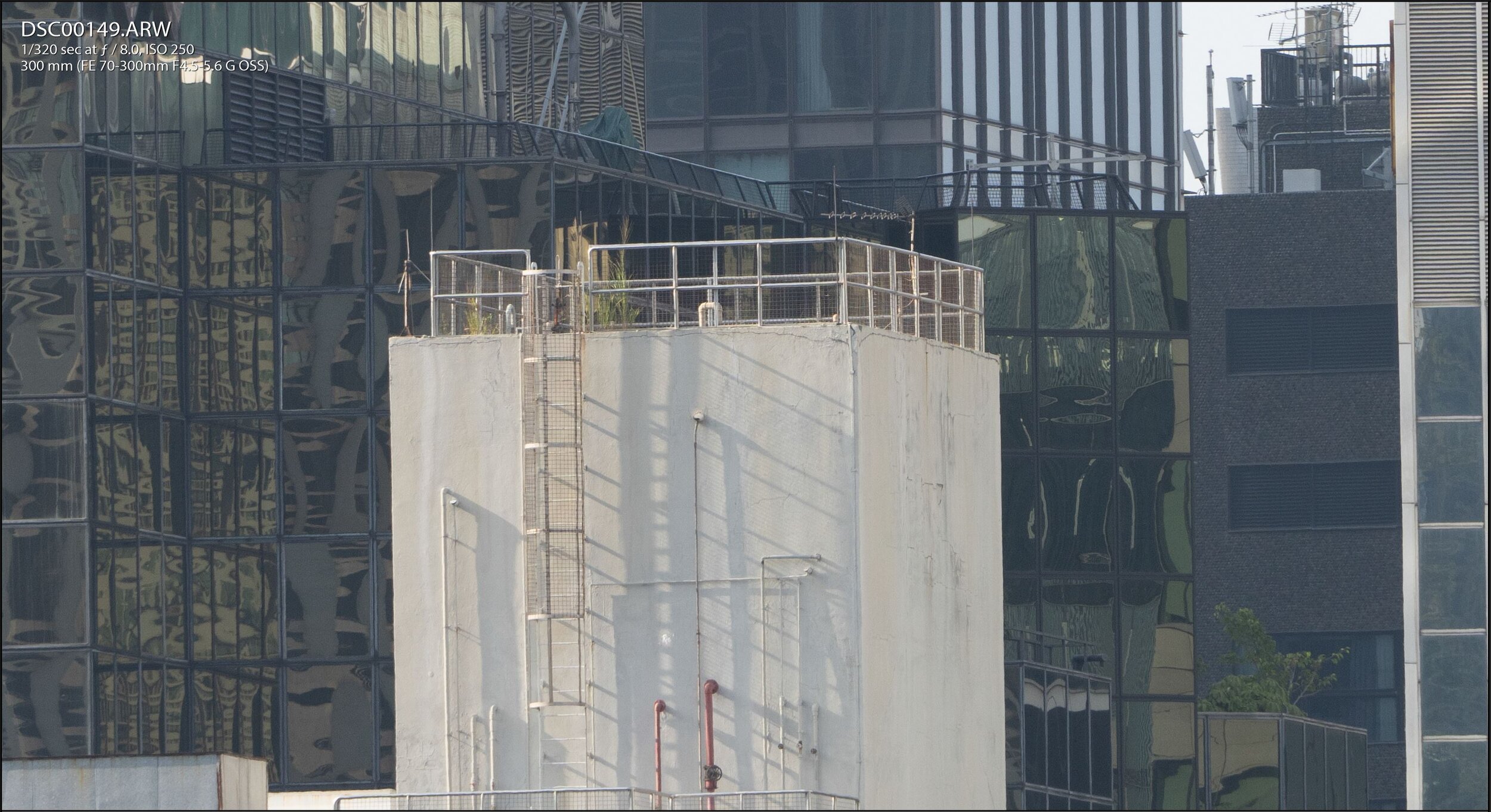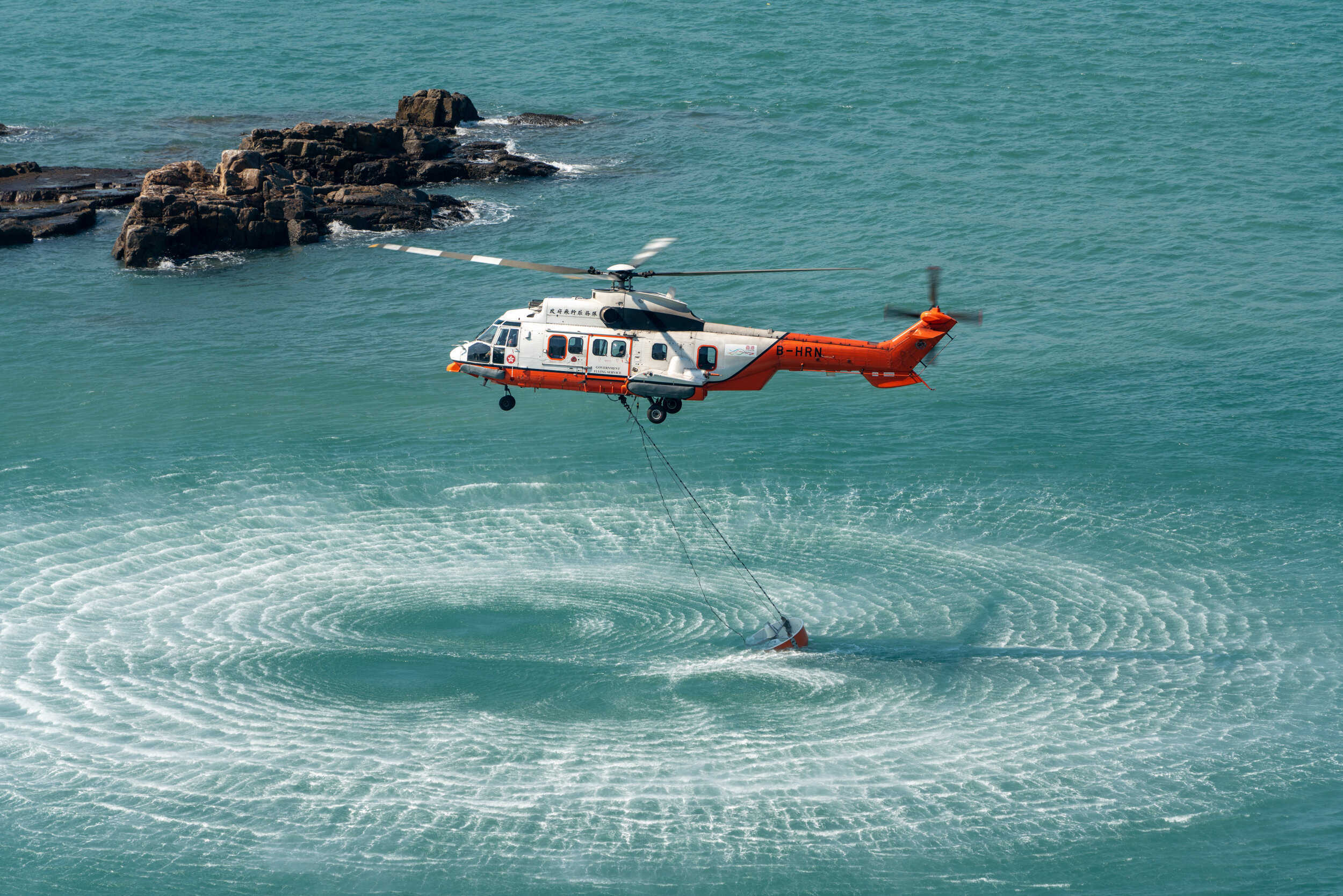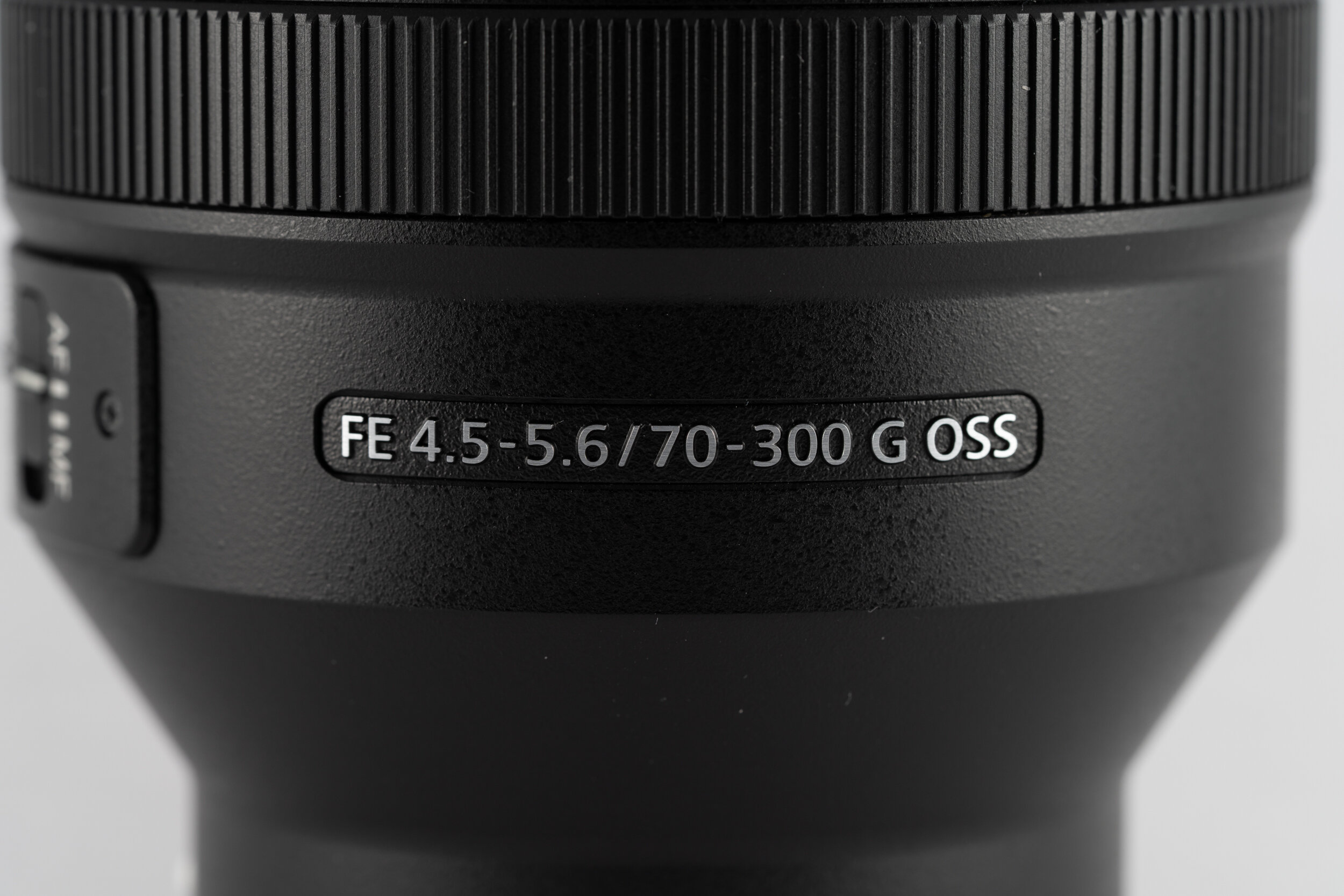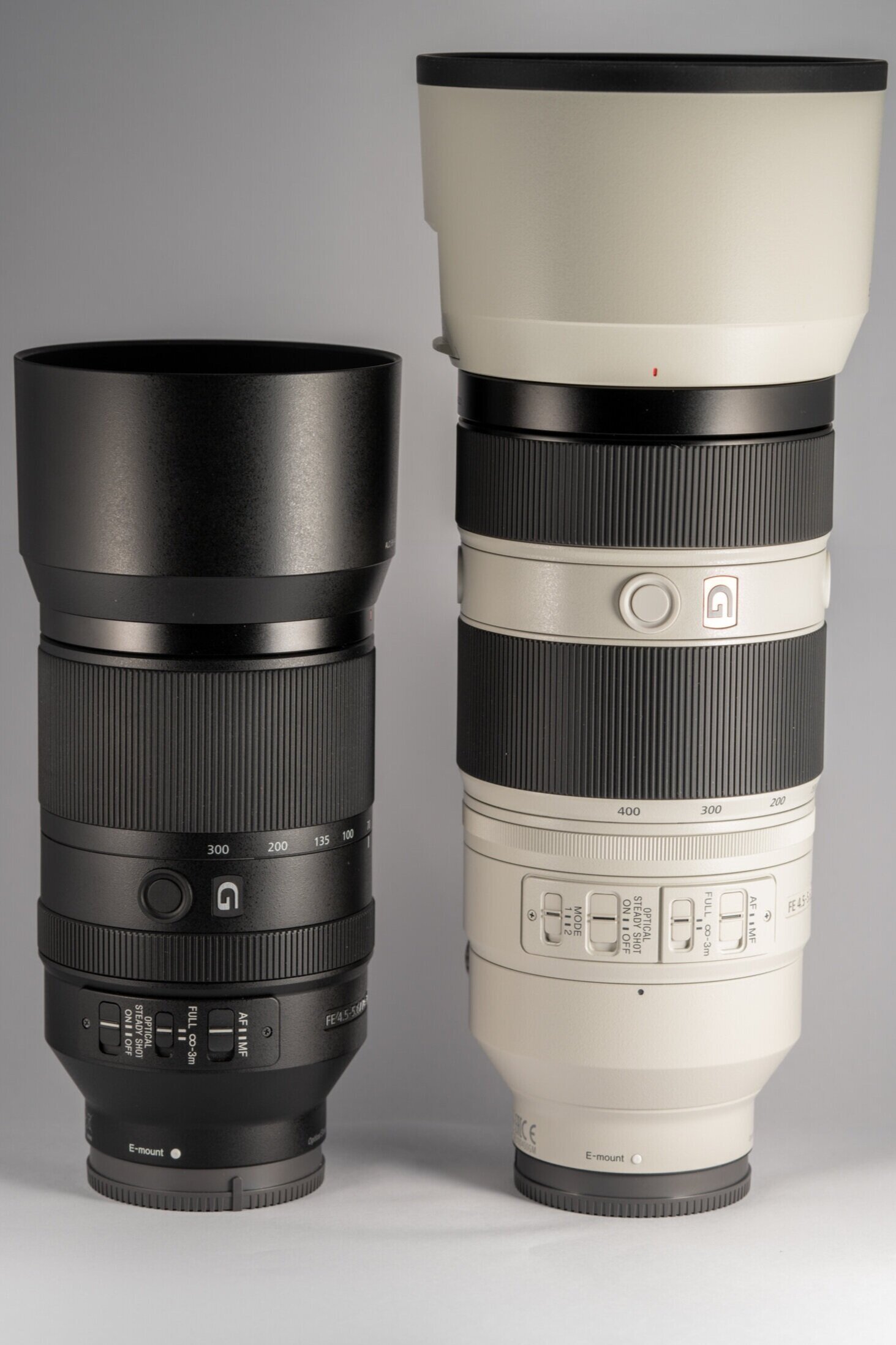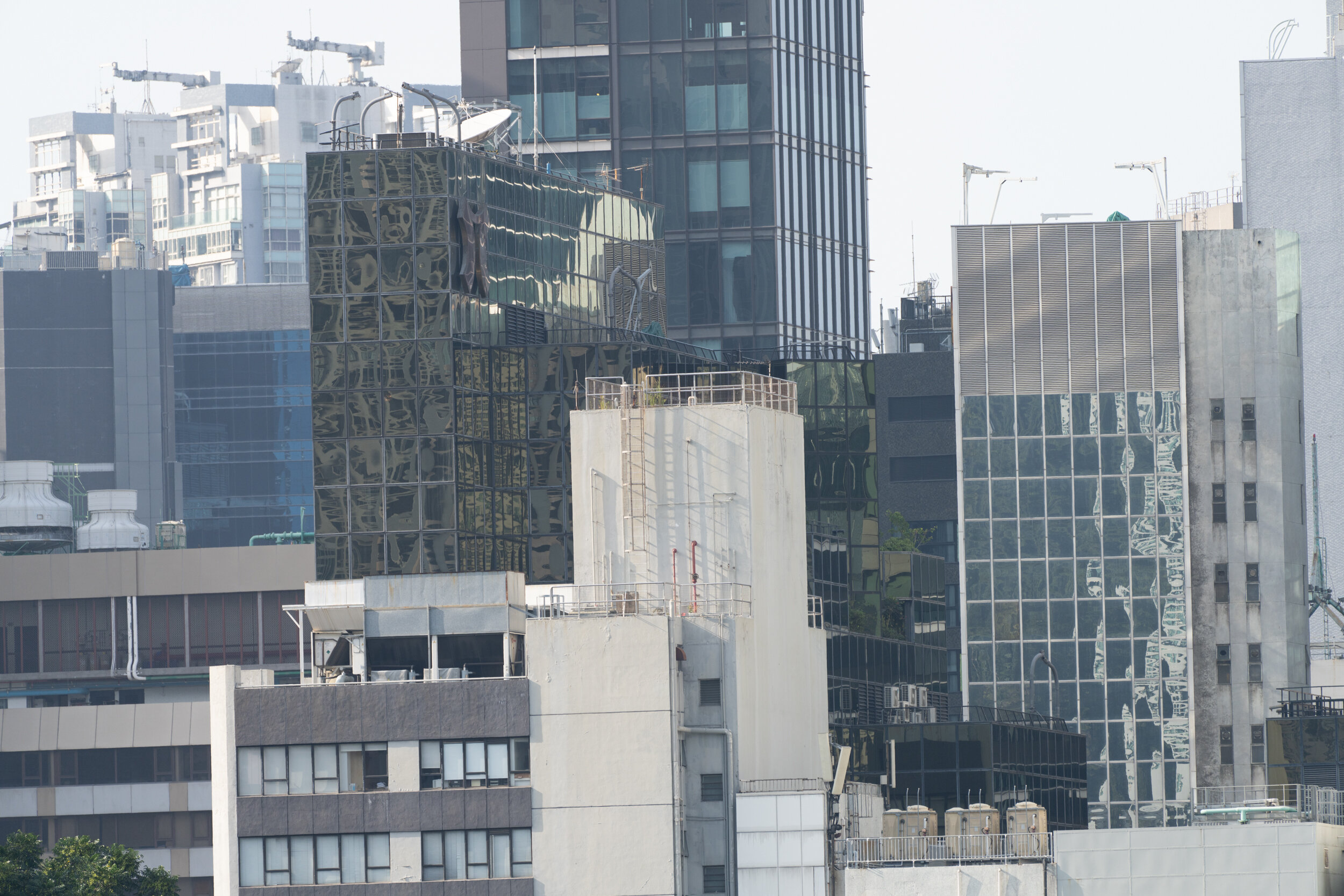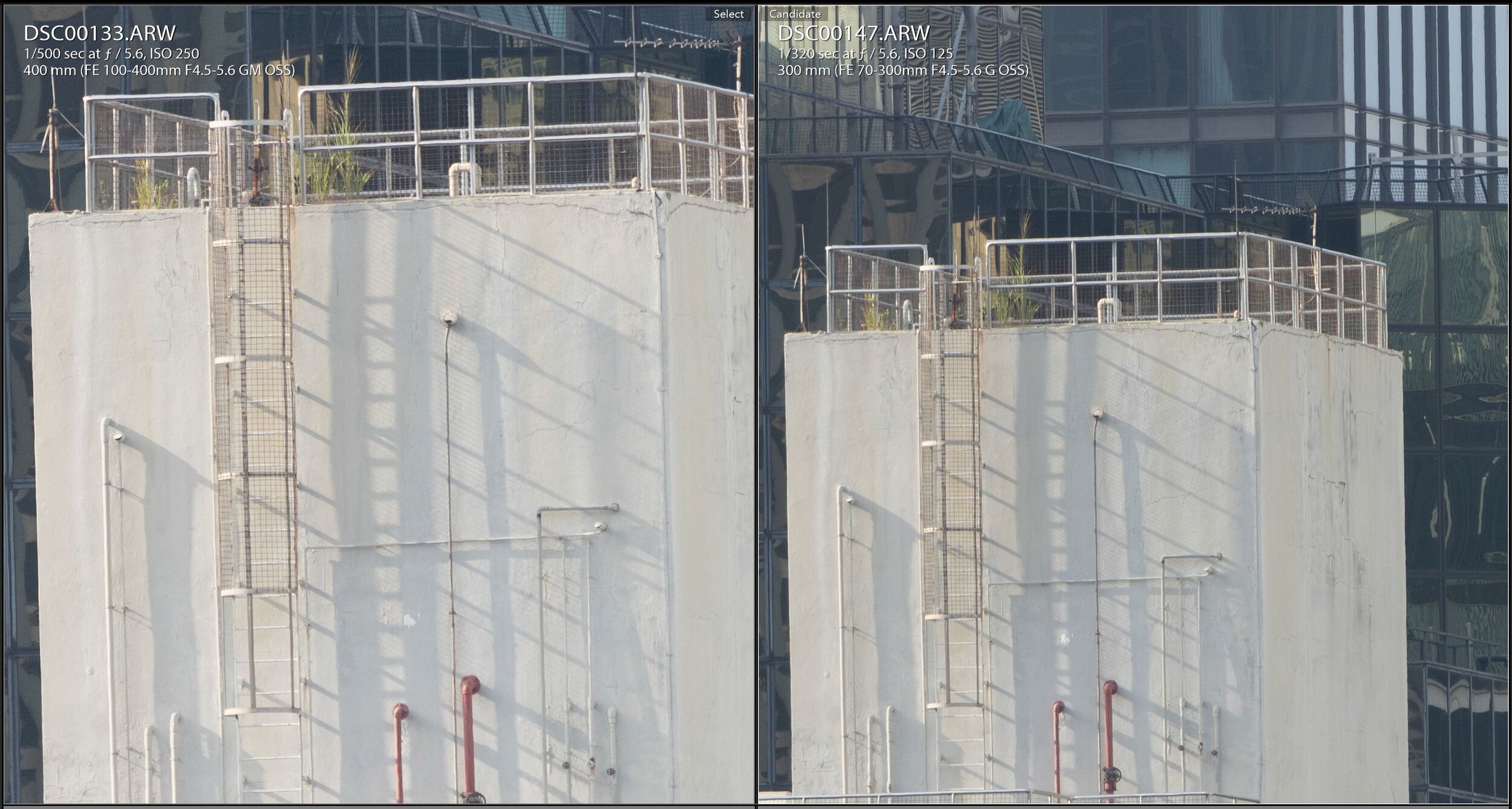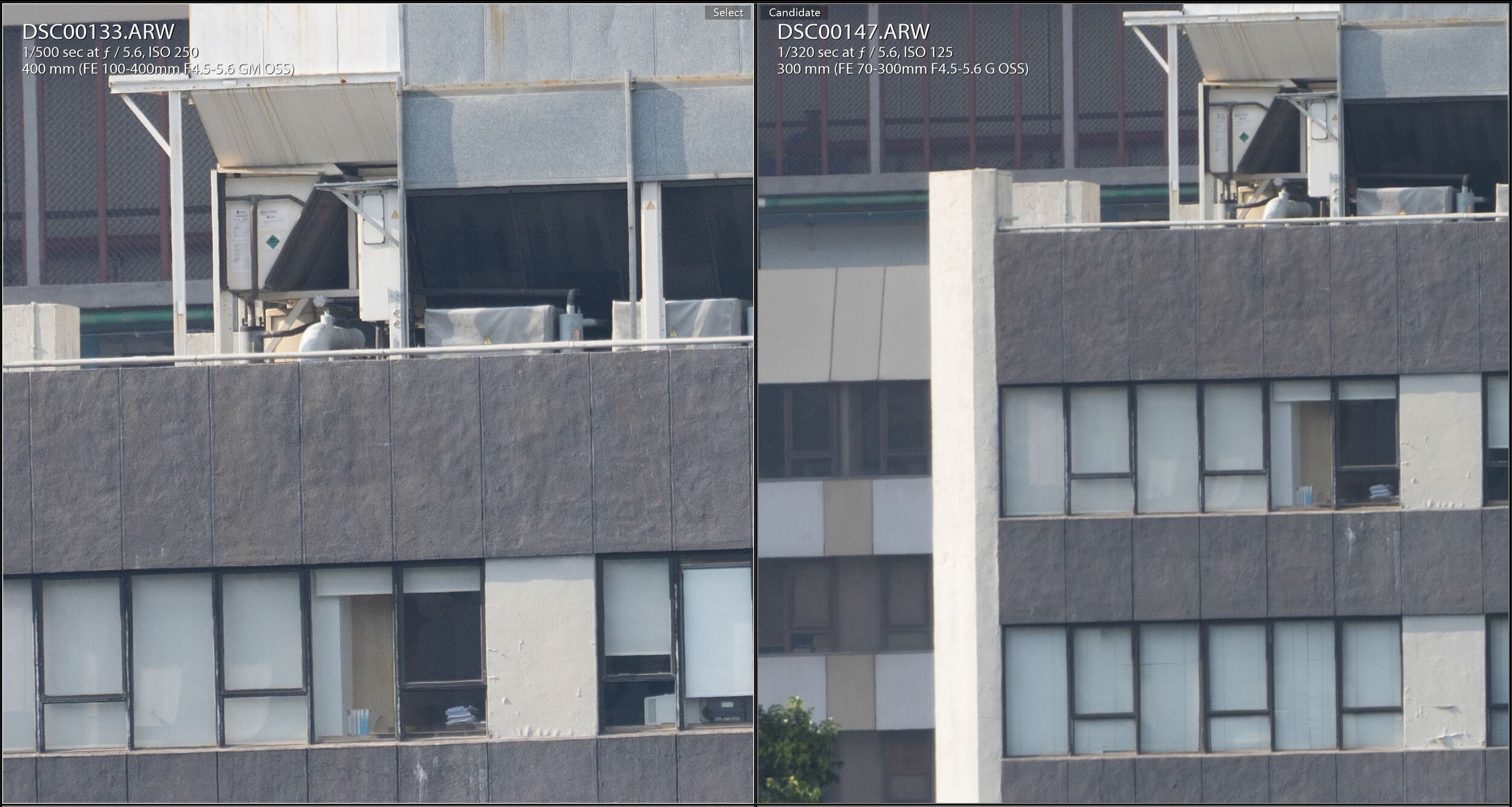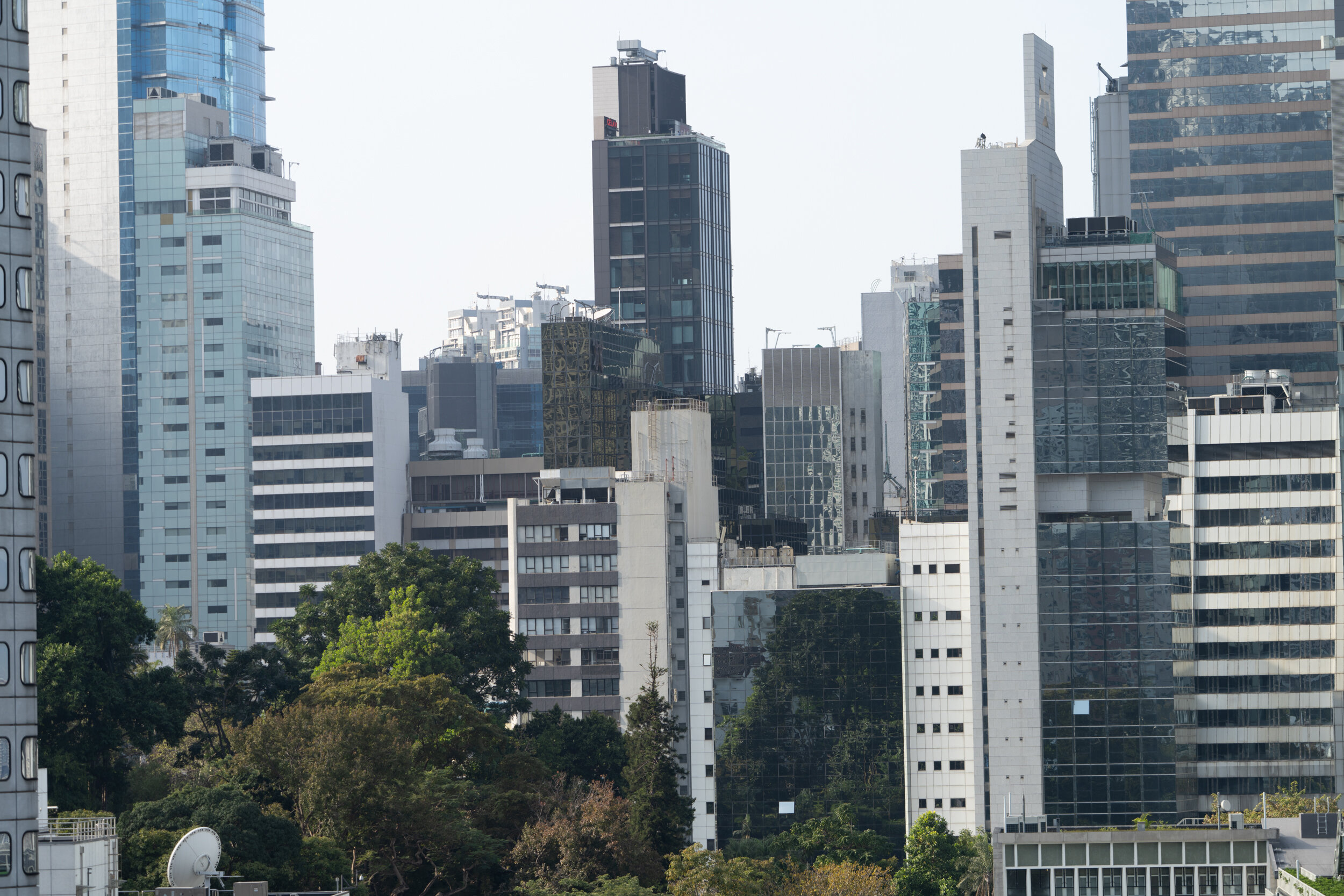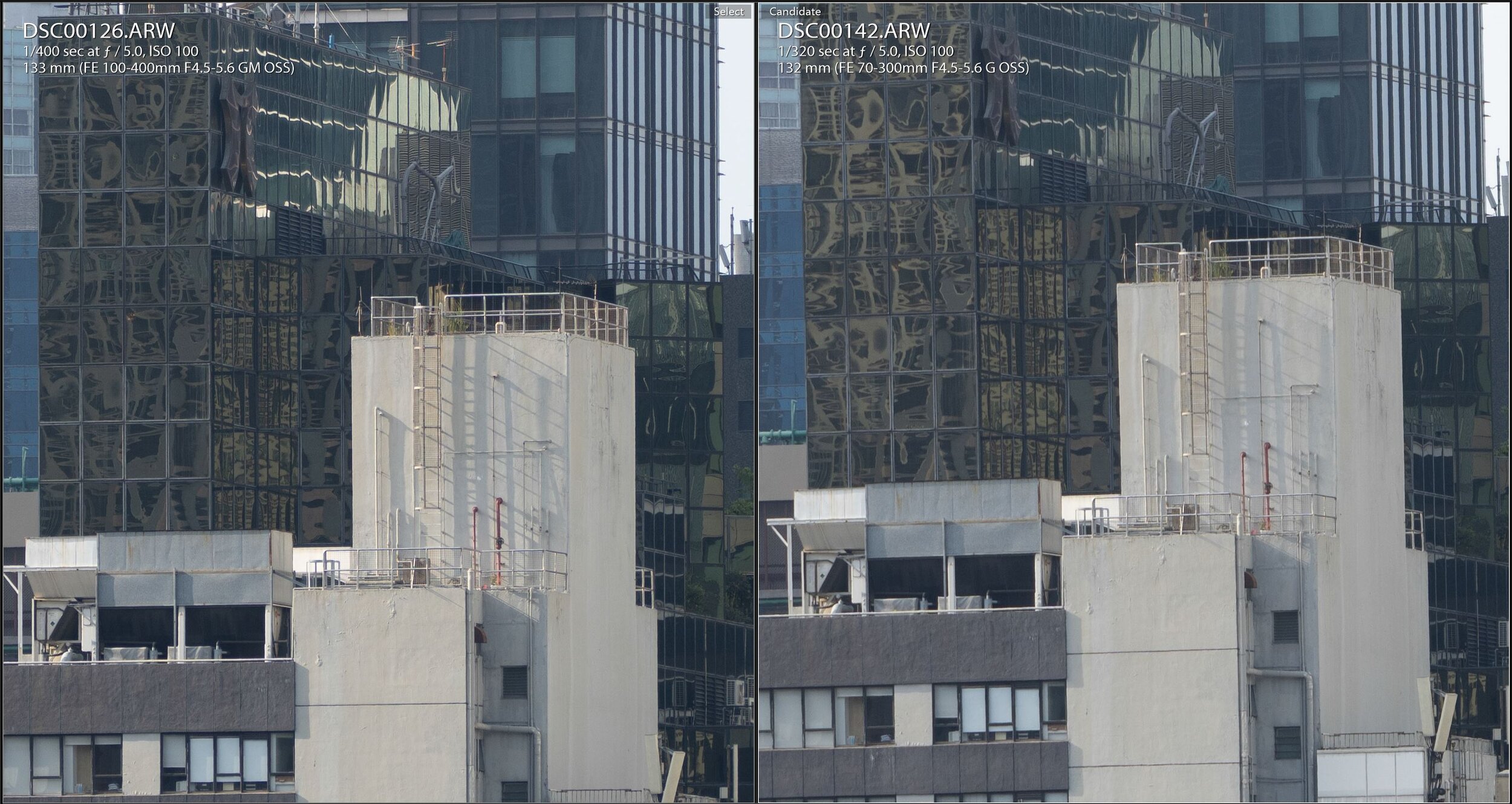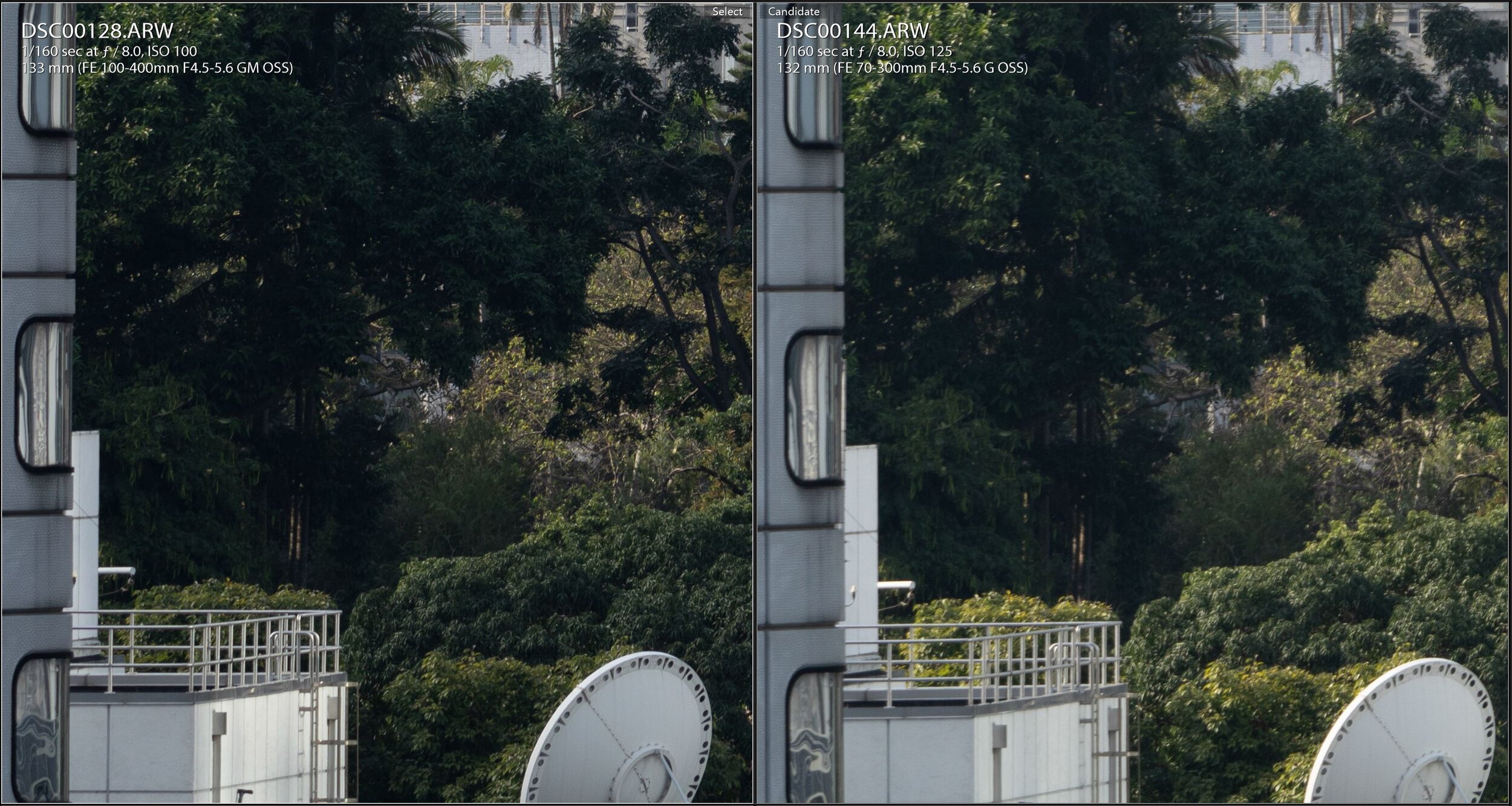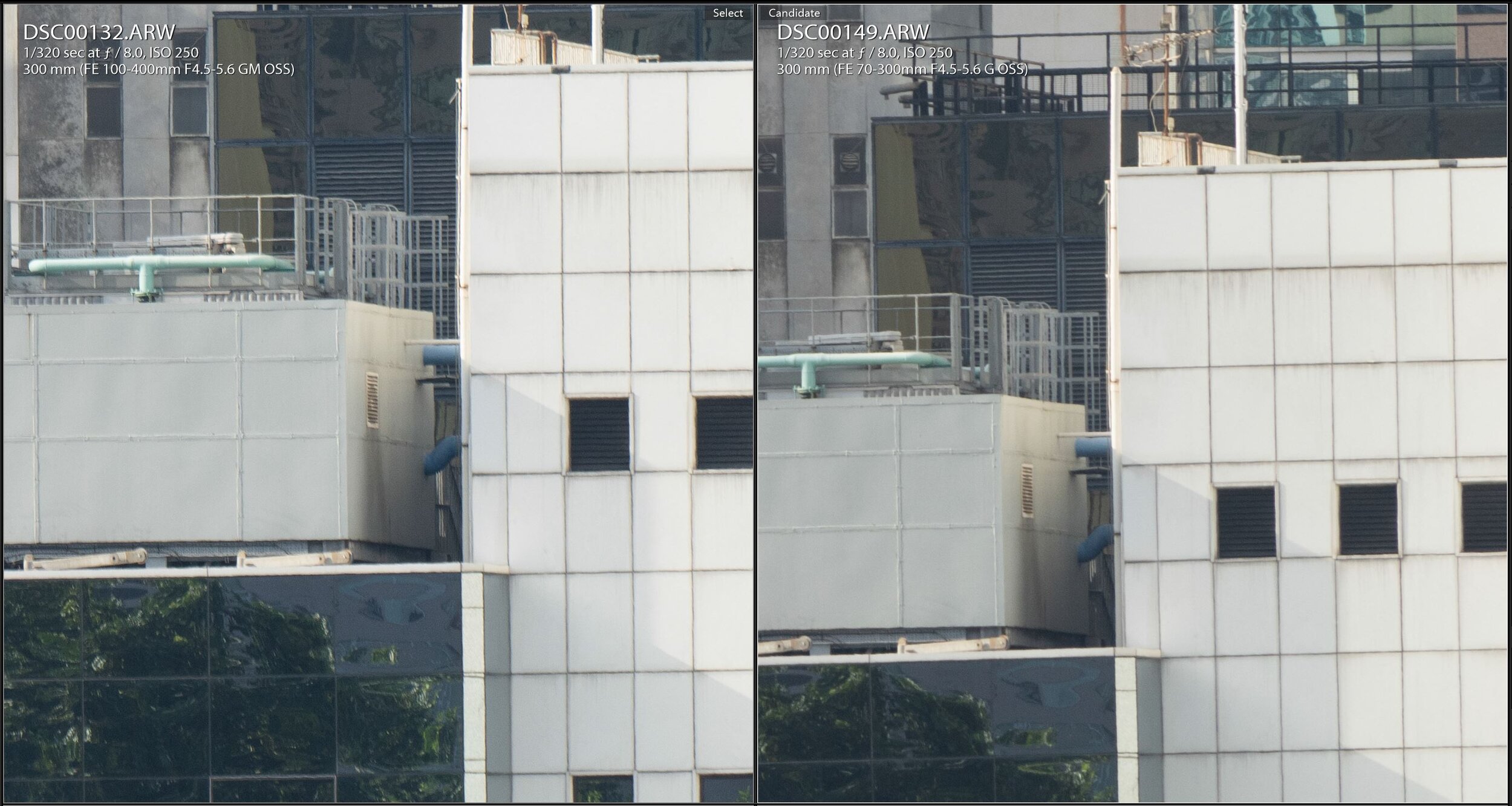Sony FE 70-300mm F4.5-5.6 G OSS Review
With Comparison to 100400GM
Sony FE 70-300mm F4.5-5.6 G OSS (SEL70300G)
Announced- Mar 2016
Pro
Comfortable Size and Weight
Con
Soft at the corner
Not compatible with teleconverter
What’s included:
There is the lens, hood, caps, manuals, and a soft carrying case in the box.
Body
The lens body is 144mm long x 84mm in diameter, weight at 854g. It takes a 72mm filter at the front, and is not compatible with Sony’s 1.4x and 2.0x teleconverter.
There is a bunch of controls on the side. At the front is the zoom ring, then focus hold, focus ring, then a bunch of controls. Then there is a panel of switches closer to the body. Top is the focus mode switch, focus range limiter, and steady shot switch at the bottom. There is a lock button on the side that can be used to prevent zoom creep.
The lens is nicely built overall, but there is no rubber gasket like the GM series lens.
There is a lock button on the side that can be used to prevent zoom creep.
Image Quality
This is a variable aperture lens. The aperture starts at f/4.5 at 70mm, f/5 at 85, then f/5.6 starting 160. Below is a comparison on different focal lengths. First with 70mm comparison, starting at largest aperture @ f/4.5. The center is a bit soft wide open, and gets better as the aperture is stepped down. The corner is soft with noticable chromatic aberration until f/8.
100mm comparison, starting at largest aperture @ f/5. The center is good wide open and gets better as the aperture is stepped down. The corner is still soft until f/8.
135mm comparison, starting at f/5, The center is good already wide open. However, the corner is quite soft.
200mm comparison, starting at f/5.6, the two lens are really similar at center and corner. No significant improvement at f/8 at 2:1.
300mm comparison, starting at f/5.6. The center and corner are good at 5.6. I feel this is the strongest focal length of this lens.
Conclusion
The 70300G is a good telephoto lens for the Sony FE camera, but with some compromises on image quality. It is also the cheapest telephoto option for Sony full frame, and is a good size and weight to travel with. The IQ is good at the center, but the corner is pretty soft across most focal ranges. Some other options to consider is the 70200G, 70200GM, 100400GM, and the 200600G. For APSC user, I think the newly E 70350G is probably a better choice, as it seems to have good reviews and is even lighter. However, I still believe it is a good choice if you are not a pixel peeper. Below are sample images I shot on my A7R3 and A7R4 across the years using this lens.
Sample Gallery
Sony FE 100-400mm G Master vs Sony FE 70-300mm F4.5-5.6 G OSS
Announced - Apr 2017
Pro
Amazing IQ
Build quality
Fast AF
Compatible with teleconverter
Con
Expensive
Big and Heavy
Sony FE 70-300mm F4.5-5.6 G OSS (SEL70300G)
Announced- Mar 2016
Pro
Size and Weight
Price
Con
Soft corner
Body
The 100400GM is 6cm longer, and 550g heavier than the 70300G. The length difference makes it difficult to store in the bag. The size is not a huge issue, and still ok to shoot handheld without a monopod. However, I definitely felt the weight after shooting for a few minutes. There is no tripod collar and foot on the 70300G, and it also doesn’t have the rubber gasket on the lens mount. However, 100400GM is more than double the price of the 70300G.
The 100400GM is better built with rubber gasket on the lens mount to help with dust/weather sealing. The rear element is more recessed in the 100400GM to accommodate the teleconverter.
These are variable aperture lens, and the table above shows the largest aperture at various focal lengths. There is no significant aperture advantage on 100400GM to 70300G.
Image Quality
This is comparing the 2 lens shooting at their widest/narrowest focal length at the largest aperture. This also shows the difference between 70mm vs 100mm, and 300mm vs 400mm. At the widest focal length, the 70300G looks acceptable at the center, but the 100400GM has more details. Then moving to the corner, the 100400 is significantly sharper with less chromatic aberration. At the narrowest focal length, the center of both lens looks good. The 70300G improve significantly compared to at 70mm.
100mm comparison, starting at largest aperture (f/4.5 on 100400GM vs f/5 on 70300G), the 100400GM is sharper than the 70300G. 70300G corner is really soft. At f/5.6, the center is very similar, but 70300G is still soft. The 70300G corner finally improves at f/8, but is still weaker than the 100400GM.
135mm comparison, starting at largest aperture, the centers are really similar between the lens. 70300G corner is a bit better than at 100mm but still soft. At f/5.6, the centers are very similar, but 70300G is still soft. The 70300G corner finally improves at f/8, but is still weaker than the 100400GM.
200mm comparison, starting at f/5.6, the centers are really similar between the lens. 70300G corner is still soft, improves at f/8 but is still weaker than the 100400GM.
300mm comparison, starting at f/5.6, the two lens are really similar at center and corner.
Conclusion
The 100400GM is definitely the lens to go for ultimate image quality. It is sharp wide open across the entire range, while 70300G is soft at the corner. On the other hand, it is 2x more expensive, 40% longer and heavier than the 70300G. Depending on the budget and the requirement, both are valid full frame telephoto zoom lens options. However, I think the newly E 70350G is probably a better choice for APS-C than the 70300G, as it seems to have good reviews and is even lighter.

